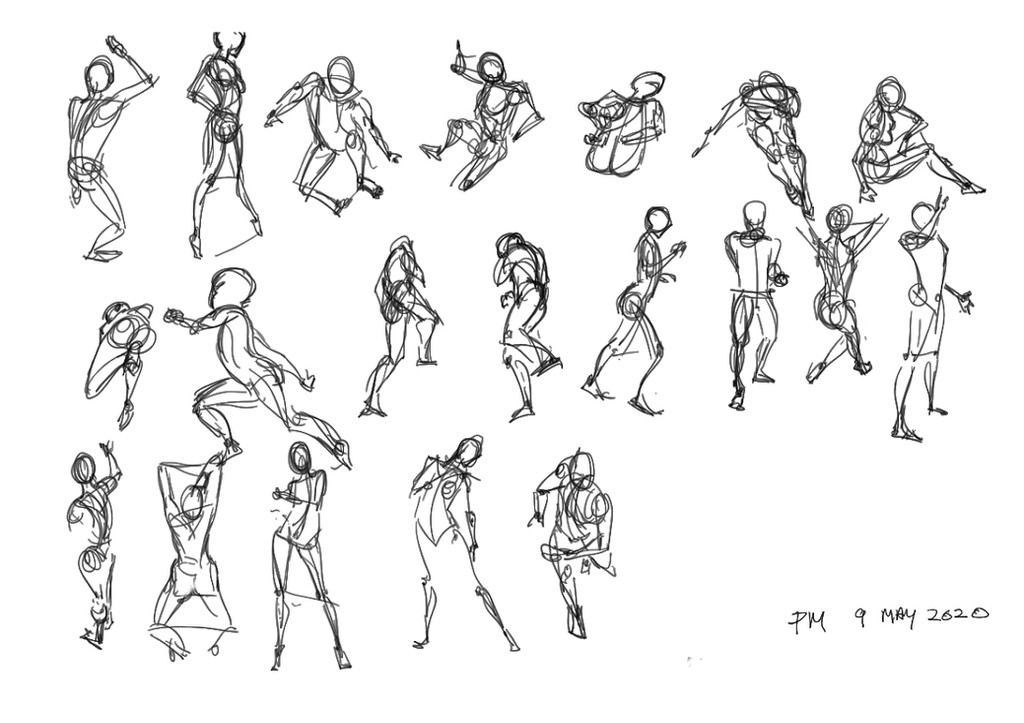HOME | DD
 Sol-Caninus — Pm-05-09-2020
Sol-Caninus — Pm-05-09-2020

Published: 2020-05-09 14:20:21 +0000 UTC; Views: 248; Favourites: 2; Downloads: 2
Redirect to original
Description
The Daily Exercise. Main thing is the increased sensitivity in feeling the flow, which is felt and can be followed directly with the stylus in all dimensions. That is it's not just seen, felt and followed in a silhouette pose, which is the easiest kind of pose to draw; it's also accessible in foreshortening. To catch the flow in foreshortened forms takes an integrated approach using notations for elemental construction and an eye for shapes and negative shapes, which together facilitate drawing across the form. At first these skills must be developed individually and expressed in "long hand," as it were - that is delineated completely. As one gets keen at using them, he need indicate only parts . . . parts of a construction, for example placing an angle at the hip, instead of constructing the entire pelvis with a box. One can also apply a truncated grid by "measuring" the relation of two points (i.e. one knee in relation to another) by drawing a straight line between them that shows how one is positioned higher, lower, or on the same level as the other. Basically, every method one has learned is integrated with an approach that serves seeing, feeling and drawing the flow.That said, neither the method, nor experience, nor result are to be taken for granted. Think of it as surfing; sometimes we wipe out (i.e., row 1, #3,#4 and #5).
A note on timed interval training: efficiency is the key to speed and the goal is maximum efficiency. Reducing the time intervals will benefit efficiency ONLY when you get comfortable working within a given time limit. Shortening the interval when you are not efficient with it will prove counterproductive to the desired end. On the other hand, if you're drawing figures, instead of gestures, you've got way too much time on your hands.

























